Test Drive of the New Porsche 911 Targa (992): The Most Luxurious Way to Enjoy a 911
公開日:2021.08.27
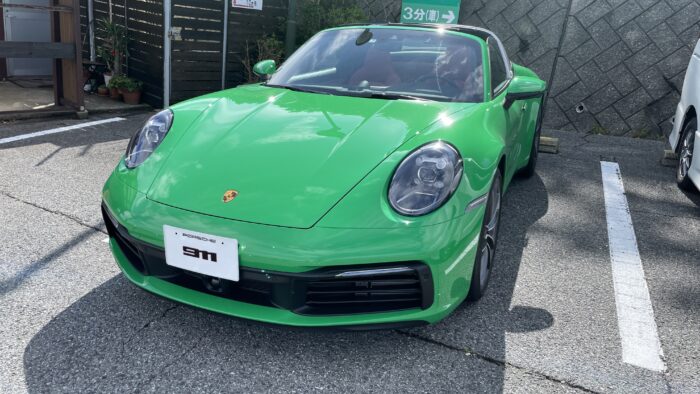
The other day, I happened to have the opportunity to experience the new Porsche 911 Targa 4 (992 model), so I’d like to share my report.
コンテンツ
Porsche 911 Targa 4 (992)
This time, I test drove the latest 992-generation Targa 4. It goes without saying, but the Targa is neither a cabriolet nor a coupe. The Targa bar, which corresponds to the B-pillar, is located in the center of the body, enhancing rigidity and providing even greater stiffness and safety than a cabriolet.
Originally developed in the 1960s to meet American open car safety standards, the Targa bar disappeared temporarily from the 993 to 997 generations but was revived again from the 991 generation to the present.
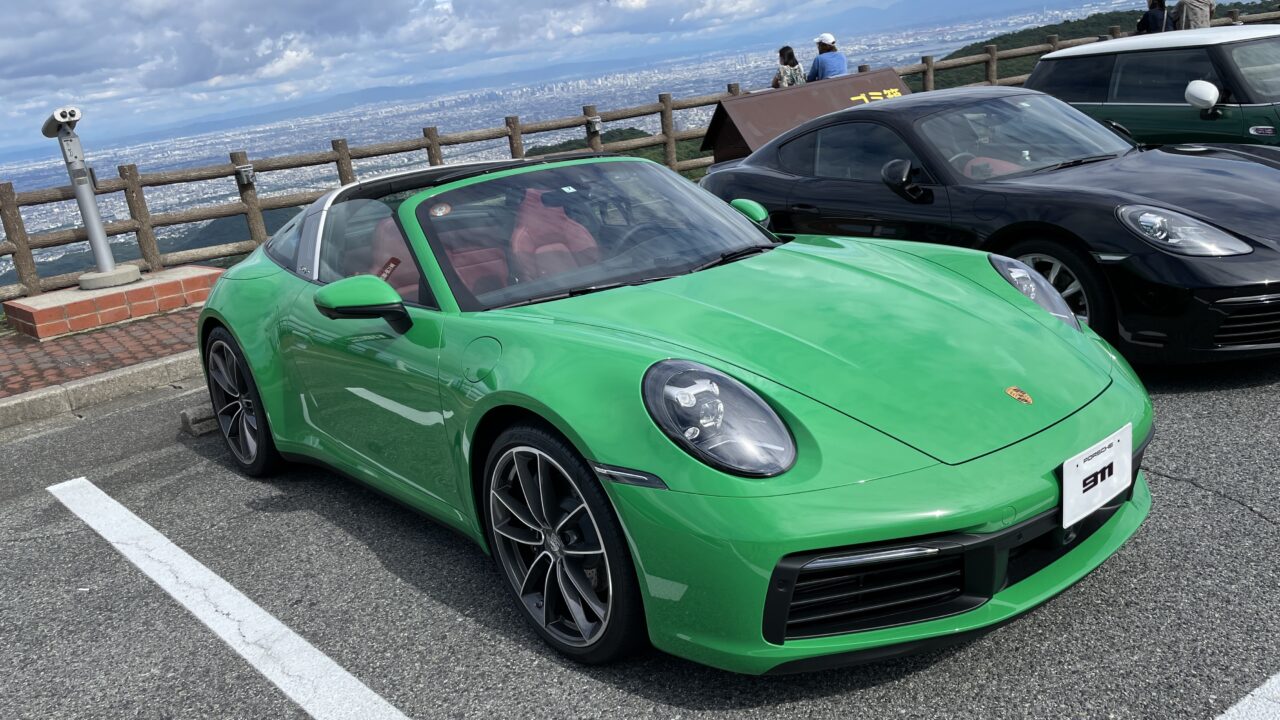
The test model was a Targa 4 dressed in Python Green. Previously, we featured a Python Green 992 Turbo S in this blog, and it looked incredibly cool. This color suits the Targa body just as well. This shade looks far better in person than in photos, so I recommend seeing it firsthand.
The combination of the silver Targa bar, black roof, and red interior is simply perfect. It could easily have been a mismatched color scheme, but the owner’s excellent taste is truly inspiring.
The Targa bar’s opening and closing mechanism differs from the cabriolet in that it cannot be operated while driving, but it opens and closes in just 19 seconds. The movement is very complex and precise—any mechanical enthusiast would be mesmerized by it.
992のタルガ4を運転させて頂いた。
カブリオレより乗り心地良い! pic.twitter.com/UGmXgwJi7H— Hiro@ポルシェがわが家にやってきた (@boxster_gts) August 15, 2021
Interior and Exterior of the Porsche 911 Targa
The interior features the leather package with a two-tone black and Bordeaux red leather. The dashboard was kept black instead of red to avoid reflections on the windshield.
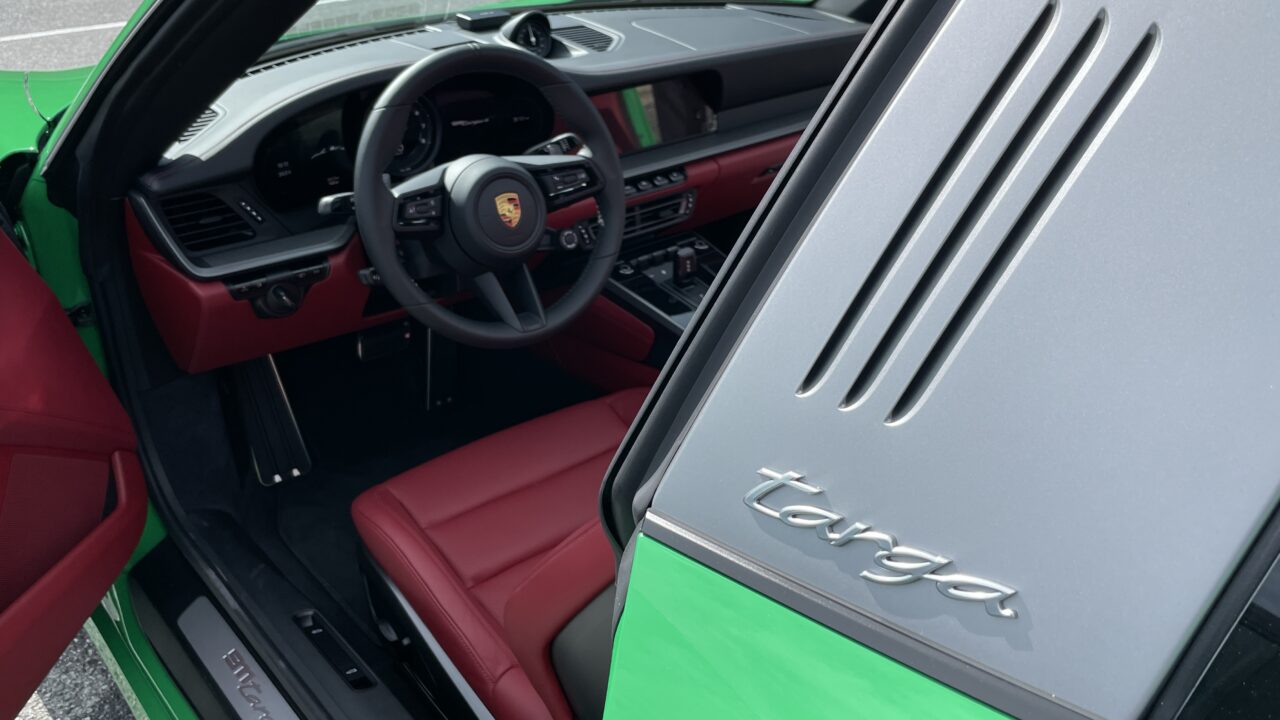
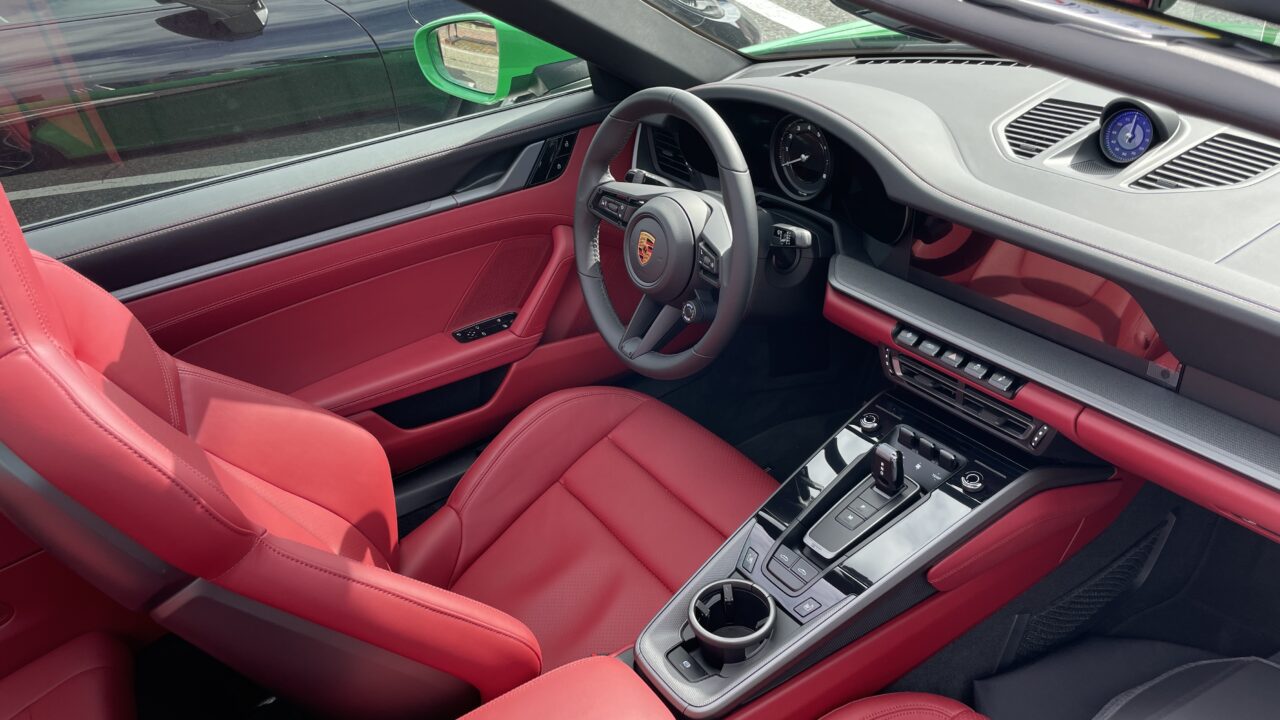
The seats were equipped with the Sport Seats Plus option. As I mentioned in previous blog posts, at least for the 992, the Sport Seats Plus option is far more comfortable than the standard Sport Seats. Of course, this depends on individual body types, but for my build (about 177cm/74kg), the Sport Seats Plus fit me much better.
Specifically, the thickness of the seat cushion is notably different. This alone can affect ride comfort, with the Sport Seats Plus being noticeably thicker. The standard Sport Seats tend to cause discomfort after long drives due to their thinner cushions, but the Plus version seems to solve that issue.
If I were to buy another 992, I would definitely choose the Sport Seats Plus option.
On the other hand, the standard Sport Seats have smaller side bolsters but wider seat and backrest widths, making them more comfortable for larger individuals. So, I think slimmer people should opt for Sport Seats Plus, while larger individuals might prefer the standard Sport Seats.
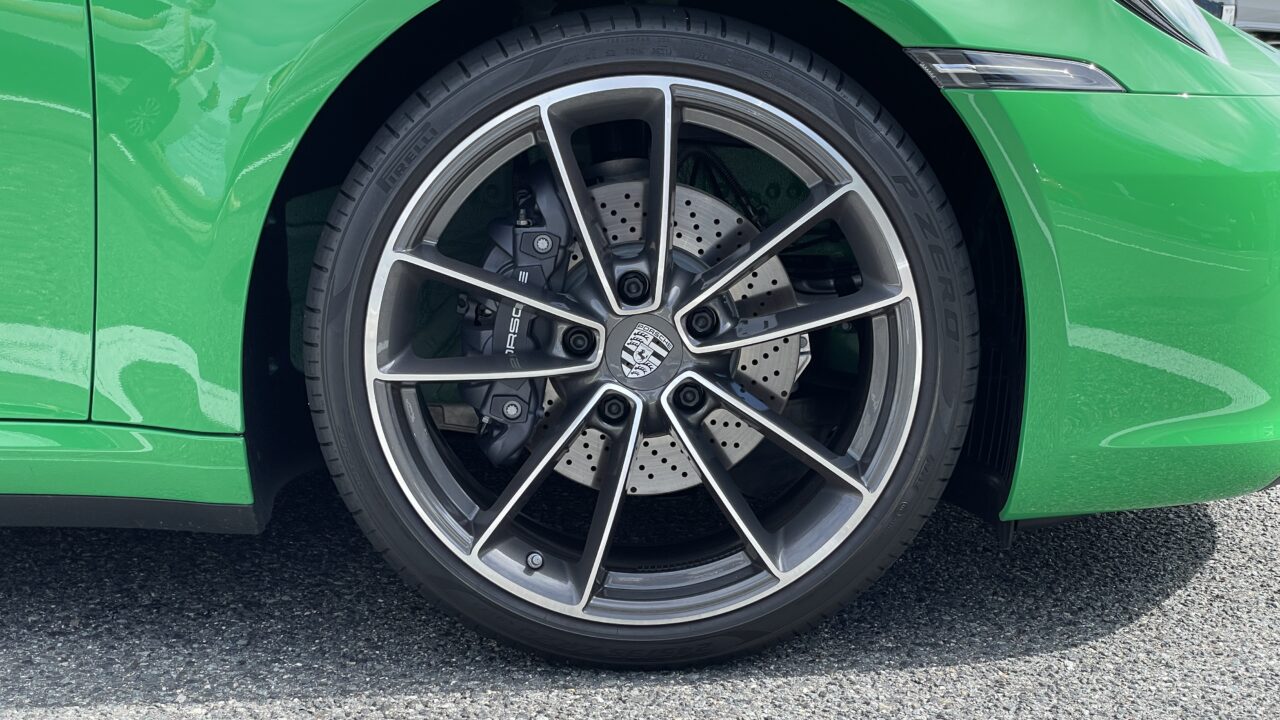
Looking at the exterior, the wheels are 20-inch front and 21-inch rear Carrera Classic wheels. Personally, this is my favorite design, and I was torn until the end about whether to choose these wheels. I think the classic wheels or the Carrera Exclusive Design wheels suit the Targa’s design best.
The exhaust features the optional Sport Exhaust with twin pipes positioned closer to the center. The rear hatch area looks slightly slimmer vertically compared to the cabriolet, and from directly behind, the design feels almost identical to the coupe.
What Is It Like to Drive the Porsche 911 Targa?
The engine start-up sound is somewhat loud, almost the same volume as my cabriolet. By the way, this unit is a MY2021, and after comparing the exhaust area with my cabriolet, it seems that it does not have a GPF installed.
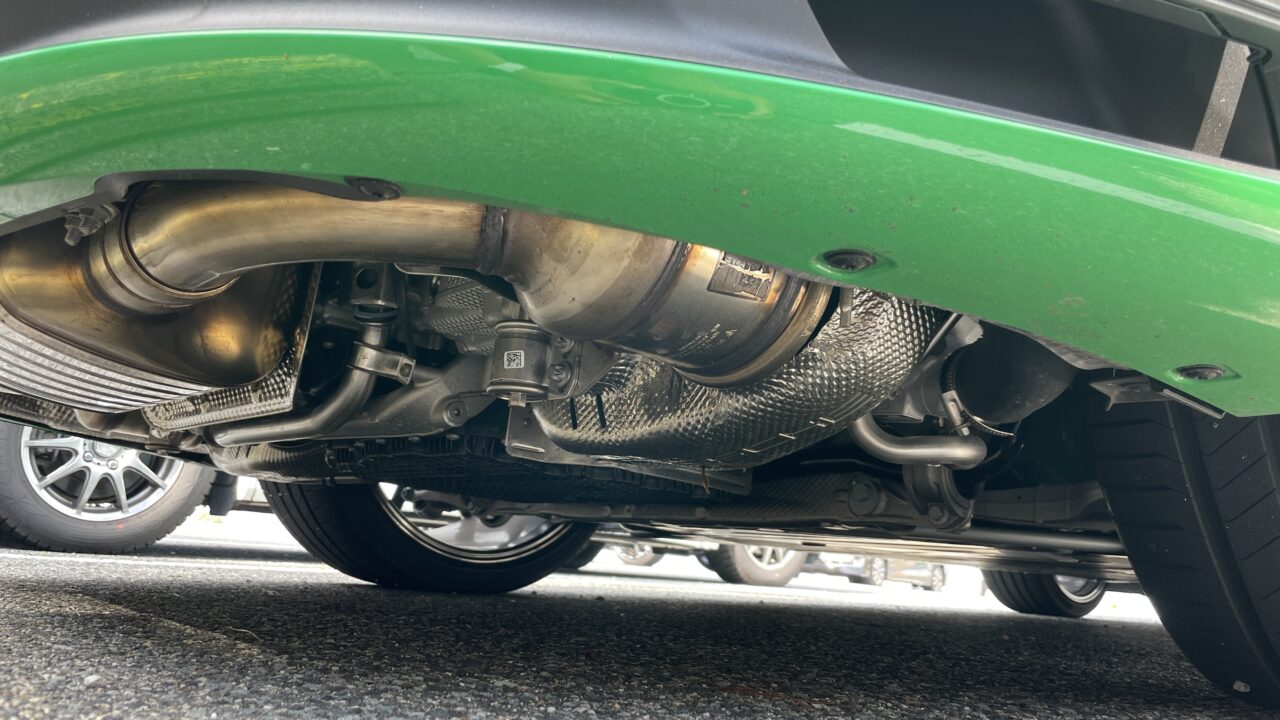
The start of driving is very smooth. It feels more refined than the cabriolet, and while it doesn’t quite match the overwhelming dense torque of the Turbo S at launch, the feeling is somewhat similar.
As speed increases, the ride comfort is excellent—milder than the cabriolet or coupe. According to the owner, the Targa has suspension tuning specific to the Targa model.
Indeed, the ride feels different from any 911 I’ve driven before.
Moreover, despite wearing 20/21-inch wheels, it feels smoother and more refined than my 19/20-inch cabriolet. With this ride quality, I doubt anyone would complain.
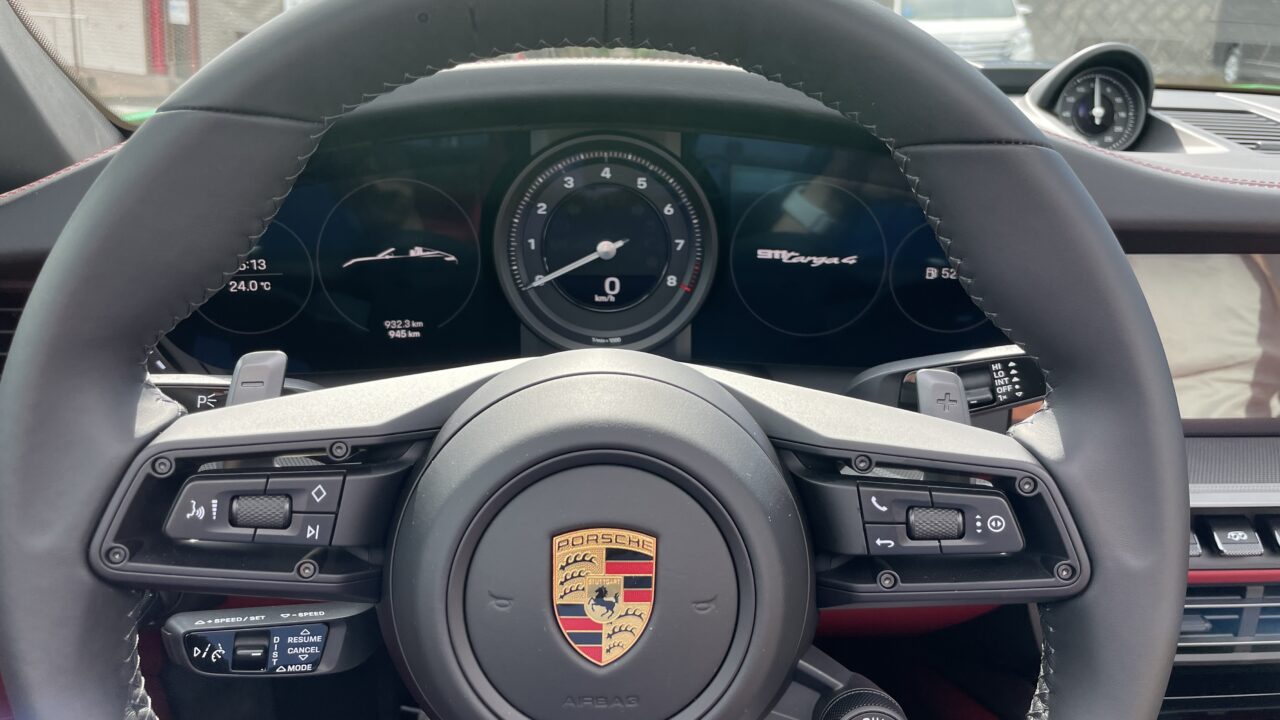
Taking a few corners, the weight and mass of the large rear glass of the Targa are definitely noticeable. It feels as if the center of gravity is somewhat higher, rather than the car simply being heavier overall.
Although the cabriolet is heavier, its fabric roof keeps the center of gravity very low, making it arguably more agile than the coupe in tight corners. I think this impression is partly because I’m used to it.
However, that doesn’t mean it negatively affects cornering performance at all. There’s no tendency toward understeer or oversteer, and it’s not difficult to drive. If anything, the difference in agility is minimal, and the car corners with remarkable precision and confidence.
At least at normal road speeds, there’s no need to worry about any drawbacks of the Targa configuration. If anything, on circuits—especially tight corners like Suzuka’s chicane or Fuji’s Dunlop corner—there might be a noticeable effect, but I think only amateurs would notice that.
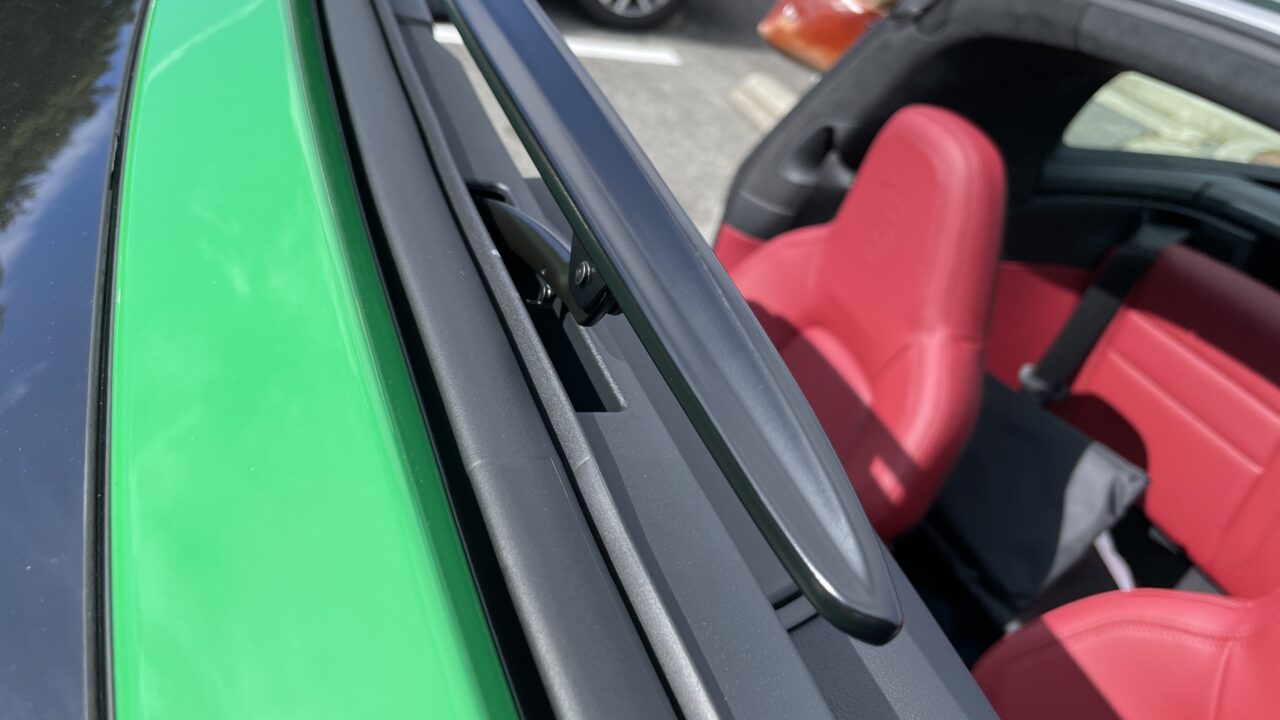
The Targa’s front windshield features a manual deflector flap. Raising it reduces wind turbulence and drumming noise. I personally didn’t find the drumming or wind intrusion bothersome at all.
Cruising through corners in Normal mode, the exhaust sound feels quieter than the cabriolet. The owner also said, “Even with the Sport Exhaust, it’s surprisingly quiet.” I thought this might be due to the large rear glass and its opening mechanism helping with sound insulation.
Once I got used to the driving, I switched to Sport mode and gave the Targa a bit of a workout. The Sport Exhaust flaps open, and the transmission selects one or two gears lower. The engine revs rise, and pressing the accelerator produces a very satisfying sound. It’s definitely not the “quiet” feeling the owner mentioned.
Regarding acceleration, with two people aboard and the Targa’s extra weight, it feels a bit milder than the cabriolet, but I think the difference would be negligible when driving solo.
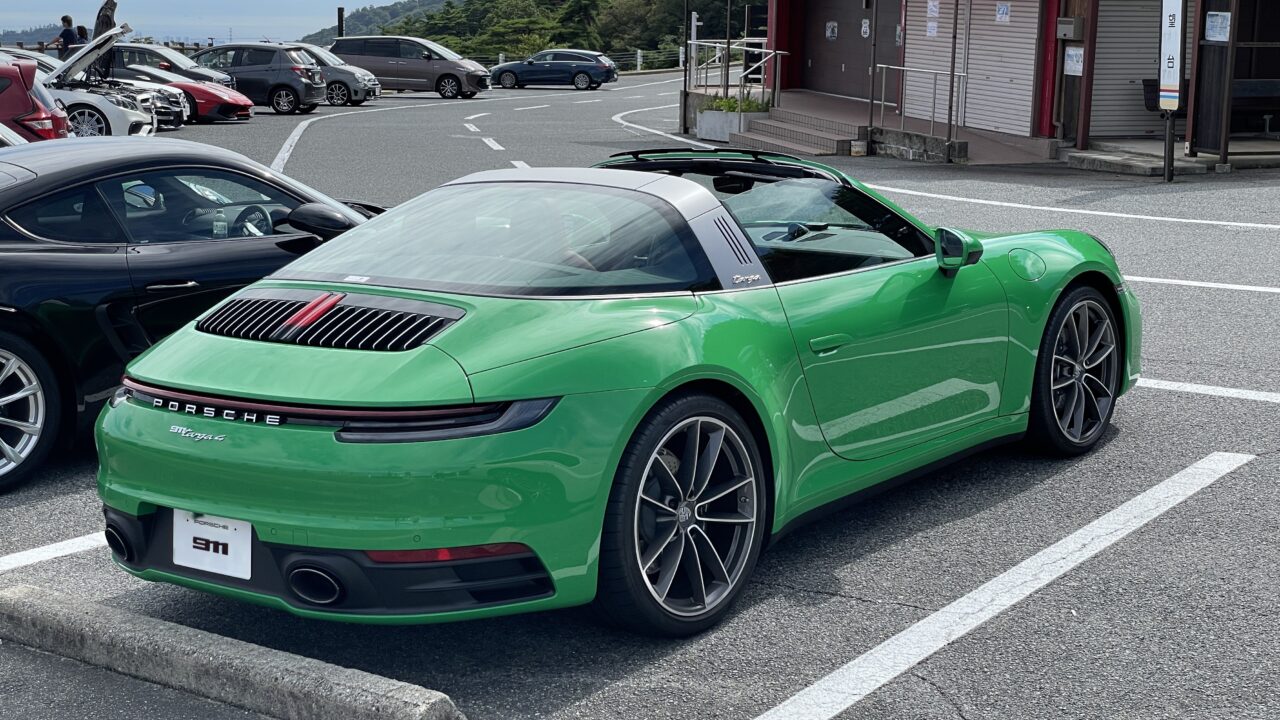
When lifting off the accelerator, a bold “bobo-bo-bo-bo!” afterfire sound is heard. Compared to my cabriolet’s normal exhaust, this seems to be the biggest difference. Even with the normal exhaust in Sport mode, you can hear afterfire, but it’s a lighter “pop-pop-pop” sound, not as distinct as this.
By the way, the acceleration sound volume is about the same or slightly louder with the Sport Exhaust, but unlike the 981 or early 991 days, there’s no clear volume difference between having or not having the Sport Exhaust.
When cornering in Sport mode, the weight difference from the cabriolet becomes even less noticeable. The engine mounts stiffen, and the whole body feels more muscular. The throttle response sharpens, and the 911 reacts exactly as you want.
Since the Targa’s rear is heavier, I thought the tight uphill corners would reveal its behavior best, so I carefully tackled Juhatcho Corner and Royu Esses. However, I couldn’t tell any difference with my skill level. The car turns in aggressively on any corner, with strong traction and no hint of front-end insecurity.
Then I remembered, “The Targa is all-wheel drive!”

The reason the Targa is AWD is probably to minimize the impact of the heavy rear. By driving the front wheels as well, weight is distributed to the front, balancing front and rear, and the sophisticated torque control of all four wheels completely eliminates any drawbacks.
That’s why it’s truly enjoyable and fast to drive—without ever making you aware that it’s AWD.
After the Targa Test Drive
After the test drive, I was once again impressed by the high performance and the brilliant control systems. What’s amazing about Porsche is that they don’t just slap on a Targa top or add an AWD system and call it a day.
They seriously and carefully tune and develop each grade with a strong focus on “balance.” This is no mere “grade” addition; it’s more like adding a new “model” that other manufacturers would test and verify extensively before release. The level of refinement is that high.
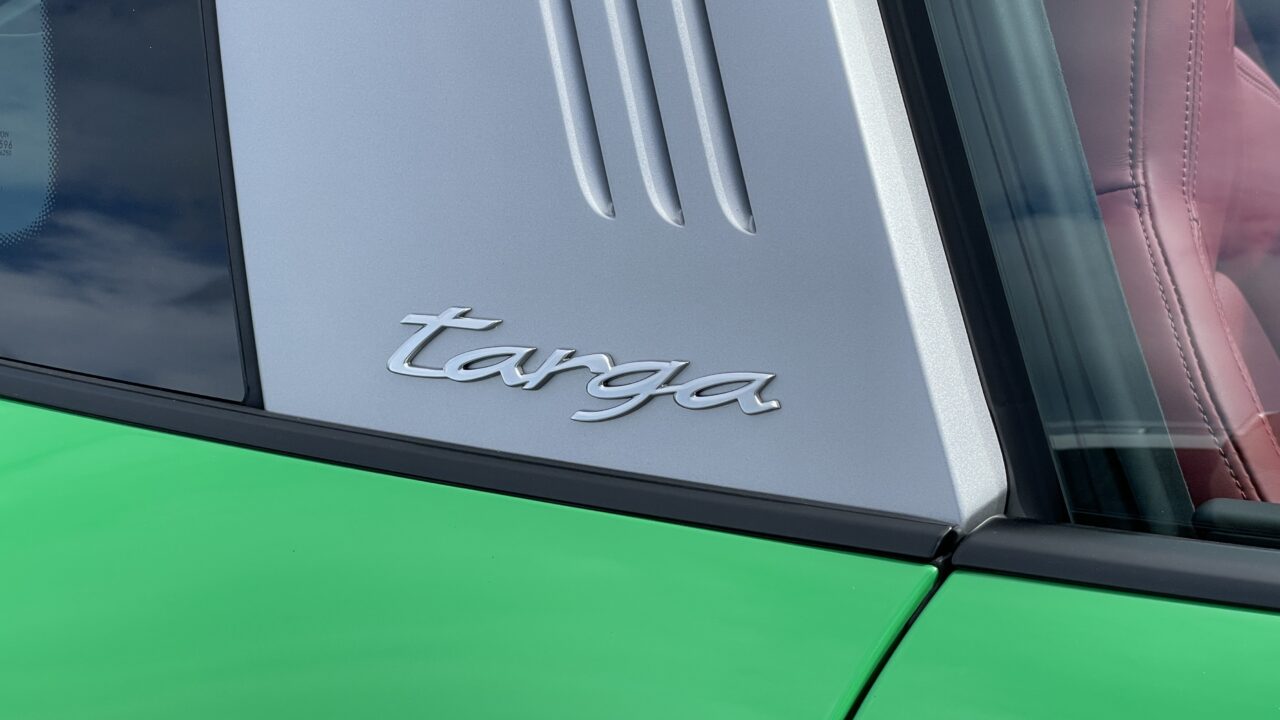
Therefore, the Targa offers the elegant and graceful ride you’d expect from its stylish appearance, while also delivering uncompromising performance as a true 911 when you push it.
I thought carefully about who I would recommend the 911 Targa to. Of course, it’s perfect for those who expect sporty 911 driving, but in addition, I especially recommend it to those who want a more luxurious ride than the Carrera, and whose main use is urban driving, dates, or shopping rather than winding roads. That’s the kind of car it is.
このブログが気に入ったらフォローしてね!


Comment ( 0 )
Trackbacks are closed.
No comments yet.